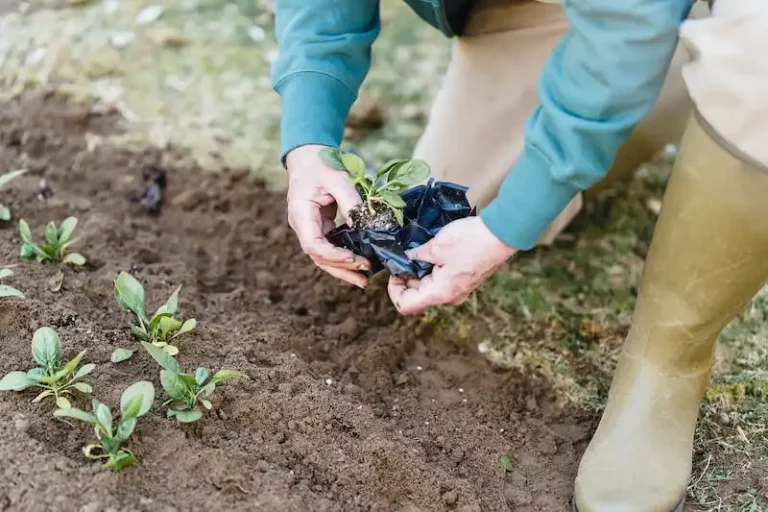Mushroom compost, also known as mushroom soil, is a highly valuable organic material that is often used by gardeners to improve the nutrient content and structure of soil. It is a natural byproduct of mushroom cultivation and is created by combining various organic materials such as straw, hay, chicken manure, peat moss, and agricultural waste, which are then mixed and allowed to decompose. The resulting compost is rich in nutrients, small particles, and soluble matter, making it an excellent medium for growing plants.
So, what does mushroom compost do? One of its main benefits is its ability to improve soil structure and water retention. The small particles and organic matter present in mushroom compost help to retain moisture in the soil, preventing it from drying out too quickly. This can be particularly beneficial in gardens with sandy soil or in areas where water shortages are common. Additionally, the organic matter in mushroom compost helps to improve nutrient content in the soil, making it an ideal fertilizer for plants.
If you’re wondering how to make mushroom compost, the process is relatively simple. Start by mixing your organic materials together, ensuring that you have a good balance of carbon-rich materials (such as straw or hay) and nitrogen-rich materials (such as chicken manure). It’s important to note that some materials, like moss or logs, should be avoided, as they can introduce pests or diseases into the compost. Once mixed, allow the compost to decompose for a period of several weeks or months, during which the materials will break down and be transformed into nutrient-rich compost.
Before using mushroom compost in your garden, be aware that it can contain nutrients in concentrations that may be too high for sensitive plants. Therefore, it’s essential to mix the compost with other horticultural fertilizers or dilute it with other organic matter to ensure that the nutrient content is adequate for your plants. Additionally, it’s recommended to pasteurize or sterilize the compost to kill any pathogens or weed seeds that may be present, as these can cause problems for your plants.
In conclusion, mushroom compost is a versatile and valuable medium for improving soil structure and nutrient content in gardens. By using this organic material, you can enhance water retention, improve soil fertility, and promote the overall health and growth of your plants. Just remember to follow the tips and guidelines mentioned above to ensure that your mushroom compost is of the highest quality and beneficial to your garden.
Mushroom Compost – What it is and How to Use it
Mushroom compost is a type of compost that is sometimes used by gardeners to improve the structure and fertility of their soil. It is made from the spent mushroom growing medium, which contains a mixture of organic materials including straw, hay, and poultry manure.
The process of making mushroom compost begins when mushrooms are grown in a controlled environment on a substrate made from the organic materials mentioned above. After the mushrooms have been harvested, the remaining substrate is collected and mixed with additional organic matter to create a nutrient-rich compost.
Mushroom compost is typically sterilized and pasteurized to remove any potential pathogens or weed seeds. This ensures that the compost is safe to use in the garden. However, it is still important to thoroughly wash any fruits or vegetables grown in mushroom compost and to avoid using the compost with edible plants that are in direct contact with the soil, such as root crops.
There are several advantages to using mushroom compost in the garden. It provides a good source of organic matter, improves soil structure and drainage, and can help retain moisture in the soil. Mushroom compost also contains nutrients that are beneficial to plants, including nitrogen, phosphorus, and potassium.
One of the main uses of mushroom compost is as a soil amendment or top dressing. It can be added to the soil before planting to improve its fertility, or it can be spread on the surface of established plants to provide additional nutrients and help retain moisture.
When using mushroom compost, it is important to avoid overapplication. A layer of compost about 1 to 2 inches thick is usually sufficient. It is also best to avoid direct contact between the compost and the stems or leaves of plants, as this can promote rot or other diseases.
While mushroom compost can be a valuable addition to the garden, it is worth noting that it is not a complete fertilizer and should be used in conjunction with other fertilizers and soil amendments. It is also important to maintain proper pH levels in the soil, as mushroom compost tends to be slightly alkaline.
In conclusion, mushroom compost is a beneficial addition to any garden. Its use can improve soil structure, provide nutrients to plants, and help retain moisture. However, it is important to follow proper application guidelines and to avoid using it with certain types of plants or in excessive amounts.
What is Mushroom Compost
Mushroom compost, also known as mushroom soil, is a type of organic matter that is created from the byproduct of mushroom cultivation. It is a highly valuable material for gardeners due to its numerous benefits and uses.
Mushroom compost is commonly used as a soil amendment to improve the quality of garden soil. It is rich in nutrients, including nitrogen, phosphorus, and potassium, which are essential for plant growth. The high levels of organic matter in mushroom compost also help to improve soil structure and retain moisture, making it ideal for a variety of plants.
One of the greatest advantages of mushroom compost is that it is eco-friendly. It is made from recycled agricultural waste and does not contain any harmful chemicals or pesticides. This makes it a safe and sustainable option for gardeners who are conscious of their environmental impact.
When it comes to using mushroom compost, there are a few things to keep in mind. First, it is important to check the salt levels in the compost before applying it to your garden. Some plants, such as salt-sensitive ones like succulents, may not tolerate high salt levels. If the salt levels are too high, you can reduce them by gradually adding water to the compost and allowing it to leach out.
To make mushroom compost, you can start by collecting the material used in mushroom cultivation, such as straw, manure, and gypsum. These materials are typically mixed together and placed in a composting medium, where they are allowed to decompose and break down. This process can take several weeks to several months, depending on the temperature and moisture levels. Once the compost is ready, it can be used in the garden as a soil amendment or added to a vermicomposter to produce nutrient-rich worm castings.
Overall, mushroom compost is a valuable resource for gardeners looking to improve the quality of their soil and promote healthy plant growth. Its numerous benefits and uses make it a popular choice among both beginner and experienced gardeners alike.
References:
Advantages of Using Mushroom Compost
Mushroom compost, also known as mushroom substrate, is a popular source of organic material for gardeners and farmers. It is a byproduct of the mushroom-growing process, made from a mixture of materials like straw, peat moss, manure, and other organic materials. Here are some of the advantages of using mushroom compost:
1. Nutrient-rich: Mushroom compost is rich in essential nutrients that plants need for healthy growth. It contains a wide range of minerals and trace elements, making it an excellent natural fertilizer for your plants.
2. Moisture retention: Mushroom compost has a high moisture-holding capacity, which helps to retain water in the soil. This is especially beneficial during dry periods when your plants may need extra moisture.
3. Improves soil structure: Mushroom compost helps to improve the structure of the soil, making it looser and more friable. This allows for better root penetration and helps to prevent compaction.
4. Disease suppression: Mushroom compost has natural disease-suppressing properties. It contains beneficial microorganisms that can help to control plant diseases and inhibit the growth of harmful pathogens in the soil.
5. Environmentally friendly: Mushroom compost is considered an environmentally friendly choice as it is made from recycled materials. By using mushroom compost, you are reducing waste and promoting sustainable gardening practices.
6. Versatile: Mushroom compost can be used in various ways in the garden. It can be used as a soil amendment, a top dressing for lawns, a mulch, or as a component in potting mixes. Its versatility makes it a valuable addition to any garden.
7. Safe and easy to use: Mushroom compost is a safe and easy-to-use option for both beginners and experienced gardeners. It is usually well-rotted and has a mild odor, making it pleasant to work with. However, caution should be exercised when handling fresh mushroom compost, as it can be more alkaline and may need further composting before use.
In summary, mushroom compost offers numerous advantages for gardeners. It provides essential nutrients, retains moisture, improves soil structure, suppresses diseases, and is environmentally friendly. Its versatility and ease of use make it a popular choice among gardeners of all levels of experience. However, caution should be taken when handling fresh mushroom compost, and it should be properly composted before use in order to avoid any potential downsides.



